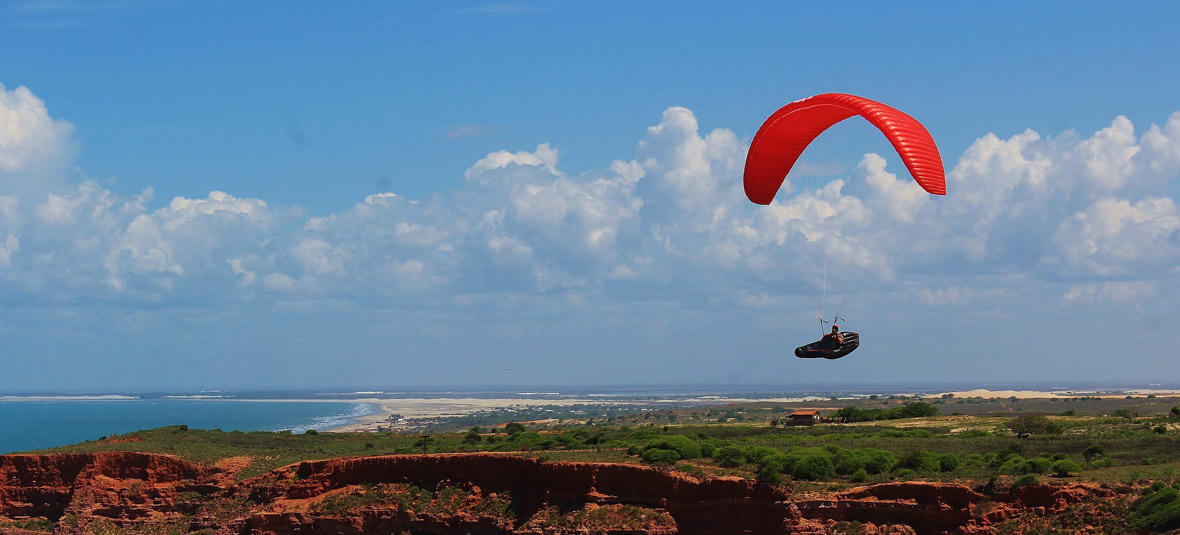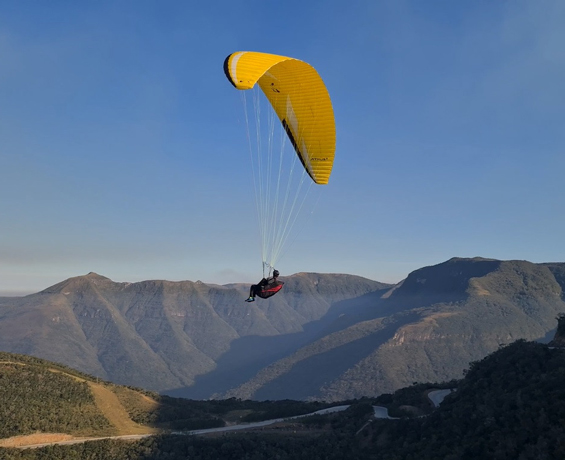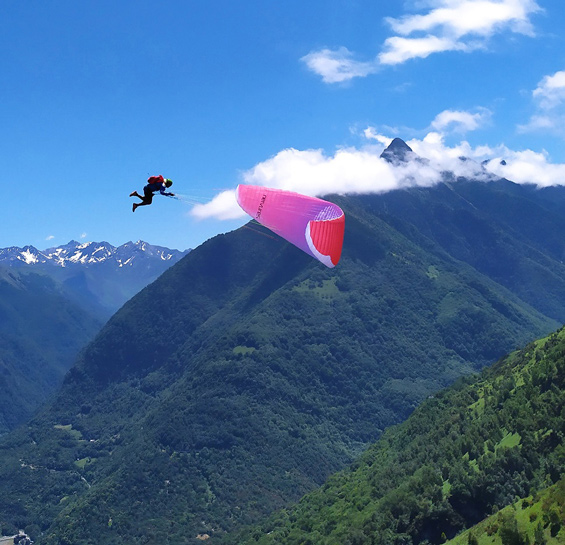How to calculate your total weight for paragliding ?


If you're new to paragliding, or just about to buy some new equipment, you're going to be faced with the question of how to size your paraglider. As with clothing, paraglider gliders are chosen on the basis of a number of characteristics, first and foremost the weight the wing will carry in flight. In this article, we'll tell you all you need to know about the takeoff weight !
WHY DO WE TALK ABOUT TFW IN PARAGLIDING ?
The TWA, or Total Flying Weight, is one of the most important pieces of information when choosing a paraglider. When you arrive at a paragliding school, one of the first things they ask you is your weight. And with good reason! This will help your instructors to offer you equipment adapted to your morphology. The most important thing to remember is that the size of your paraglider will depend on your weight.
HOW TO CALCULATE YOUR TFW ?
There are two ways of calculating your TFW, both of which are described below.
Calculating the total weight of your equipment to determine your takeoff weight
The first method consists in making a calculation that will enable you to get closer to the real value of your TFW. All you need to do is add up the weights of the following items:
TFW = Rider weight + Clothing weight + Equipment weight + Accessory weight
Pilot weight = Your bare weight
Clothing weight = the weight of your entire outfit for the day, shoes, clothes, etc.
Equipment weight = Weight of wing + reserve + harness + any other equipment you take with you on flights
Accessory weight = weight of water bottle filled with water, telephone, external charger etc....
In simple terms, the TFW = everything that will end up in the air.
The advantage of this method is that you can easily estimate your TWF to within a few kilos. You can even make estimates based on the type of equipment used. The disadvantage, however, is that it's still an estimate, and pilots often tend to underestimate their TFW by forgetting to take into account several elements, such as the water bottle, which can quickly represent 2 kilos of the total weight, or the helmet and its 400 to 800 grams, or the rucksack, which generally weighs between 600 grams and 1 kilo.
This method is generally used when you're planning to buy new equipment and don't have the opportunity to weigh yourself in real life with all your gear.
Knowing your TFW by weighing yourself
The second method for determining your TFW is simply to weigh yourself with all your equipment. Very easy to use if you already have all your equipment, this is the most effective and reliable way of finding out your TFW. To do this, however, you need to be in possession of all your equipment.

WHAT IMPACT DOES THE PTV HAVE ON THE WEIGHT RANGE OF A PARAGLIDER ?
Once you've worked out what your wing weight is, you'll need to choose the size of wing you want to use. To fully understand the impact of a wing's TFW, let's break it down into three zones.
Let's assume that our wing has a 70/90 RWP range, i.e. from 70 kg minimum TFW to 90 kg maximum TFW.
What are the consequences of flying a wing at the lower end of the weight range ?
In our example of 70 to 75 kilos, flying at the lower end of the range will have the following consequences :
Positive aspects :
- Take-off and landing speeds are slower, so everything is smoother.
- The wing's reactions are also slower.
- The sink rate is lower, so it's easier to climb in thermals, especially in light conditions.
Negative aspects :
- The wing will tend to have a "boat-like" behavior. Controls are less firm, and piloting is less precise.
- You fly slower, so the wing is less efficient against the wind.

What are the consequences of flying a wing at the high end of the TFW range ?
In our example of 85 to 90 kilos, you can expect the opposite consequences to flying at the lower end of the TFW range :
Positive aspects :
- The wing will be more responsive and precise. The wing will glide more smoothly through turns, reacting more sharply to control inputs, giving you a more precise feeling of flying both at the controls and in the harness.
- Optimized maximum speed, enabling you to fly faster, particularly into the wind.
Negative aspects :
- You'll have to run faster on take-off and landing, as speeds increase homothetically in relation to weight, so for the same sail area the speed polar shifts to the right, implying greater speed throughout all phases of flight.
- The sink rate is greater, so thermal efficiency will be less effective, especially in weak and broad ascents.
- Faster wing reactions
Is flying in the middle of the range the best compromise ?
The last TFW range is called the mid-range, with a low mid-range (75/80 in our example) and a high mid-range (80/85).
This is generally the best compromise between speed, wing control and damping of wing reactions.
HOW TO CHOOSE WHICH TFW RANGE TO FLY IN ?
As a general rule, we recommend that you fly your wing in the middle of the maximum weight range. But depending on the needs of each pilot, this may not be the right range.
Let's take a few examples:
- A pilot who often flies in very windy areas is more likely to need a fast-moving wing, and will therefore prefer to fly at the top of the TFW range.
- A pilot flying on the plain in a low-thermal-efficiency area will prefer to optimize his sink rate. For this reason, he will tend to fly his wing at the lower end of the range.
- In soaring, the choice can be a dilemma: depending on wind speed, a wing flown at the lower end of the range will allow you to fly in light winds, but you'll quickly find yourself stuck if the wind increases. On the other hand, a wing loaded to maximum TFW won't keep you in the air at low wind speeds, but once the speed picks up, you'll be able to enjoy yourself while other pilots are grounded.








